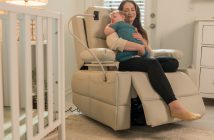It is an undeniable fact that healthcare services are subject to scientific, electronic and digital innovation. The industry utilises high-tech devices and is underpinned by the transfer of information, increasingly supported by the fast-paced flow of digitisation. Technology has a great capacity to improve the healthcare sector in several key ways.
-
Information Technology (IT) and resources
In today’s age, the internet is responsible for the transfer of unprecedented amounts of data. Plus, varied forms of information technology (IT) such as intranets and computer-based databases allow health care professionals the means to access, analyse and synthesise information in real time. This is commonly referred to as health IT.
As more and more healthcare services connect, the amount of data that is retrieved and stored in electronic databases continues to grow, allowing the entire medical field to make use of comprehensive research studies. For example, this may be used to better identify risk factors through meta analyses by comparing patient data with results from a growing pool of resources.
-
Wi-fi and secure networks
The medical industry deals with a preponderance of sensitive and time critical information, eg. in the form of patient records and results. Whatever the specific type of medical infrastructure or service, rest assured it must have constant wireless connectivity. In order for the practice of medicine to flow seamlessly, the need for a converged and secure network is glaringly apparent.
For example, medical providers are making use of wireless lanand managed wireless lan to optimise the connection between hospitals, practices and other and their patients. Modern applications of Wi-fi are all-encompassing. Just a couple of examples include wireless blood pressure cuffs (automatically transfers readings to a patient’s chart and allows medical professionals to view results on their iPad etc.), and large radiology image files that are transferred and backed up in data centers.
-
Smart devices
The engineering of smarter devices occurs on a rapid scale in all spheres of industry the world over. One of the most relevant of these is the medical sector, where equipment forms an integral component in the delivery of key services. Therefore, innovation of increasingly efficient medical devices affords great potential, particularly when it comes to improved case management, treatment and patient recovery.
The ability to link devices with smartphones is very much on the radar. This might look like high-power microscopes, ultrasonic probes and almost anything that can augment the features of already existent technology. On the preventative side of things we already have many items of the market, including trackers and sensors (know as wearables eg.fitbits) that encourage better health practices on the individual level.
-
Automated systems
An ever-expanding focus on automation means that medical providers can save valuable time, allowing their staff to concentrate on high-priority issues. One of the biggest benefits is that this can afford a greater ability for surgeons and doctors to save patients’ lives in the process.
Examine the example of closed-loop systems. These medical devices are able to get a reading and deliver a treatment without any human intervention. In particular, a specific operatus that’s often referred to as an ‘artificial pancreas’ (the MiniMed 670G by Medtronic) works by automatically monitoring blood sugar levels and administering insulin as required (no need to constantly check and inject). These types of systems and equipment can alleviate the strain on an industry that is, more often that not, overburdened and stretched to capacity on a labour force basis.
-
Drug development
The process of developing new drugs is currently extensive and very expensive. Technological advancement stands to greatly improve this situation, with a range of methods from organisational procedures to even futuristic applications such as artificial intelligence (AI) in the mix.
One of the most revolutionary of examples is in silico clinical trials. This ‘indicates the use of individualised computer simulation in the development or regulatory evaluation of a medicinal product, device or intervention’. Basically, this means that a virtual patient can be used a test subject, heralding massive transformations in the biomedical industries in the ability to bypass the lengthy and involved aspects associated with traditional drug trials.
-
The future of medicine
When it comes to the future of medicine, technological innovation is the cog in this ever-spinning wheel of innovation. This comprises many facets such as gene sequencing, nanotechnology and robotics. These leading-edge approaches to medicine offer great potentialities for the wellbeing of humanity.
For example, The Human Genome Project has the potential to provide valuable information about drug sensitivity, medical conditions and even family history. Nanotechnology, in the form of micro-sized robots can be used to deliver drugs and other medical treatments in a highly targeted fashion.
As you can witness from the above points, the delivery of healthcare services is contingent on technological innovation. An ability for medical professionals to adapt and master the use of high-tech networks, devices, systems and cutting-edge techniques is the cornerstone of what it means to provide healthcare services in the 21st century.





One of the most obvious ways in which technology has worked to improve the healthcare industry is by contributing to advancements that lessen suffering and improve treatment options for patients. The improvement of medicines, machines, and other treatments not only have increased the chance of recovery for millions of individuals worldwide, but the
Thanks for highlighting some of the best technologies that are enhancing health and wellness!
Technology in every field of life play an important role, many IT companies and experts are active in the development of technology, and it takes many advantages from it. As we can see the robotic machines are involved in everywhere so this wifi remote access also part of robotic technologies.
Such a nice and informative, love to read.
Technology has helped the medicinal services industry from numerous points of view to specify. Also, we trust that it will keep on doing as such. Progressions in it have facilitated the job specialists played with their patients. It makes it more less demanding to locate the more precise analysis for side effects, and furthermore the medications th
Electromagnetic therapy is another use of tech and the best part is that it can be used by all. Thanks for the great post, onwards and upwards with AI & ioT 🙂